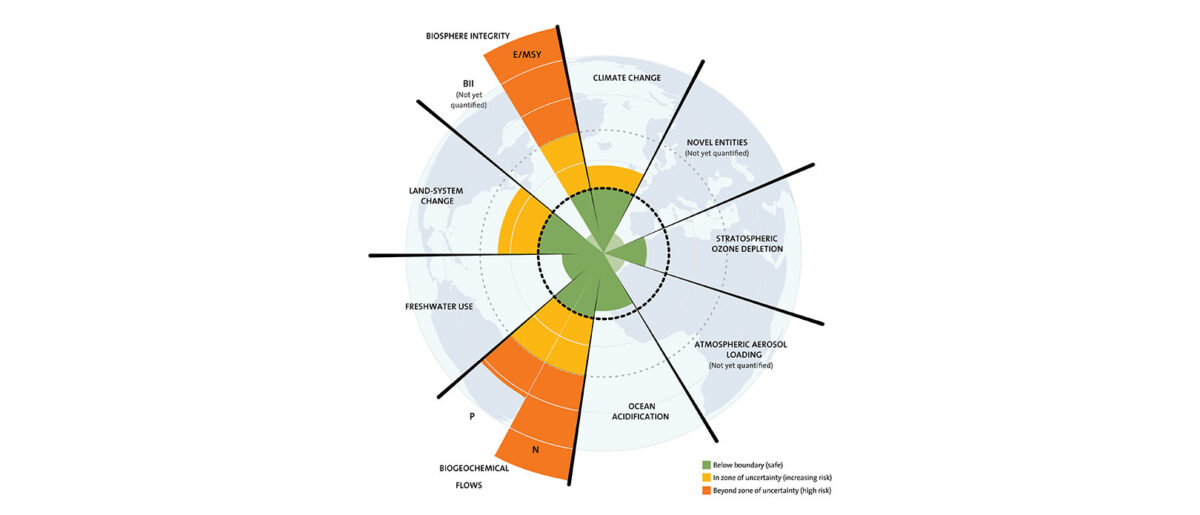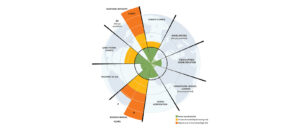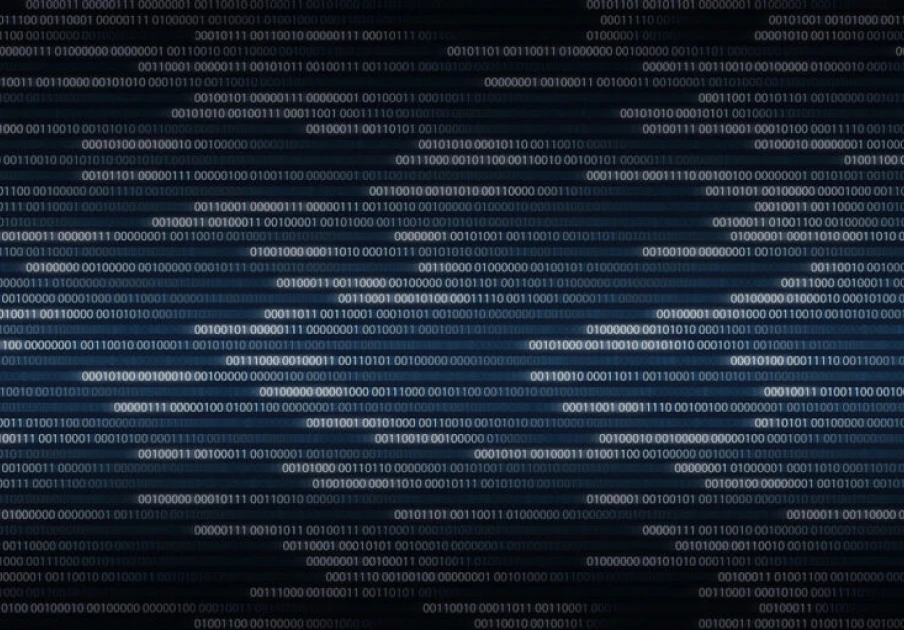Beyond Carbon – The Impact of Scope 3 Emissions Across Planetary Boundaries

Part 1 – Biodiversity Loss
In 2009, a team of 28 scientists, led by Johan Rockström of the Stockholm Resilience Centre, identified nine processes that govern the stability and resilience of the Earth system. These scientists proposed a set of quantitative planetary boundaries that would promote continued development and prosperity for generations to come – that is, if the limits of these boundaries were not exceeded by human activity. The crossing of these boundaries, however, poses a heightened risk of causing large-scale, irreversible environmental changes.
The nine planetary boundaries identified by these internationally renowned scientists include:
1. Climate change: The Earth’s climate system is highly complex, and human-induced climate change can have significant impacts on global ecosystems and human societies.
2. Biodiversity loss: The diversity of life on Earth is essential for the healthy functioning of ecosystems and for the provision of vital ecosystem services.
3. Nitrogen and phosphorus cycles: Human activities have significantly altered the nitrogen and phosphorus cycles, leading to eutrophication, harmful algal blooms, and other environmental problems.
4. Land-use change: Human activities, such as deforestation and urbanization, can lead to the loss of natural habitats and the degradation of soil.
5. Freshwater use: Excessive use of freshwater can lead to water scarcity and affect aquatic ecosystems’ health.
6. Ocean acidification: The absorption of carbon dioxide by the oceans can lead to ocean acidification, which can harm marine ecosystems and affect the growth of organisms such as coral reefs.
7. Ozone depletion: Human activities have led to the depletion of the ozone layer, which protects the Earth from harmful ultraviolet radiation.
8. Atmospheric aerosol loading: Anthropogenic aerosols, such as black carbon and sulfur dioxide, can have significant impacts on air quality, human health, and climate.
9. Chemical pollution: Human activities can release hazardous chemicals into the environment, causing harm to human health and ecosystems.

The Greenhouse Gas Protocol (a collaboration between the World Resources Institute and the World Business Council for Sustainable Development), is used by businesses, governments, and organizations around the world to measure and manage their emissions. The categories of Scope 1, 2, and 3 emissions were first introduced in the second version of the Greenhouse Gas Protocol Corporate Accounting and Reporting Standard.
Scope 1, 2, and 3 Emissions
Scope 3 emissions result from the indirect activities (i.e., outside of the organization’s boundaries) of an organization’s value chain, including suppliers, customers, and other stakeholders. In other words, they are the emissions that result from the supply chain but are those which are not included in the organization’s direct emissions (Scope 1) or its indirect emissions from energy purchases (Scope 2).
While Scope 1, 2 and 3 emissions are all important for organizations to consider when measuring the societal impacts across their value chains, we will focus specifically on the impact that Scope 3 emissions can have on each of these boundaries, as they account for 75% of an organization’s greenhouse gas emissions (World Research Institute).
In this first blog series installment, we’ll consider the impact that Scope 3 emissions have on one of the most important planetary boundaries – Biodiversity loss.
Biodiversity Loss
Biodiversity refers to the variety of life on Earth, including different species, ecosystems, and genetic diversity. Measuring the impact of human activity on biodiversity is crucial to understanding the state of our planet, helps us to better understand the damage we are doing to the Earth’s ecosystems, and can guide and inform conservation efforts to help protect endangered species and their habitats. Biodiversity is essential to maintaining healthy ecosystems and providing essential ecosystem services such as pollination, nutrient cycling, and water purification. The loss of biodiversity can have significant consequences for human well-being, including decreased food security, increased vulnerability to natural disasters – even a loss of cultural heritage.
Unfortunately, the current picture does not look great. The World Wildlife Fund estimates that we are currently experiencing what it refers to as the sixth mass extinction in the planet’s history:
“Today, the earth is experiencing its sixth mass extinction event, driven by human activity and subsequent rising global temperatures. The WWF Living Planet Report 2022 found that, in less than 50 years, the world has lost 69% of all mammal, fish, bird, reptile, and amphibian populations. The presence of an abundant variety of life on earth is critical for the health of our planet. With biodiversity, all species work together within their respective ecosystems to maintain a necessary balance and support life.”
Biodiversity loss has been accelerated by human activity, and measuring the impact that the products and services organizations procure through their supply chains have on biodiversity can help them better understand the extent of the damage and, hopefully, develop effective strategies to mitigate it. By assessing the causes of habitat destruction, invasive species, and climate change, for example, they can take steps to address these issues and promote effective ecosystem restoration.
Scope 3 Impacts on Biodiversity
Direct impacts of Scope 3 emissions can occur through activities such as deforestation, habitat destruction, and land use change associated with the production and transportation of goods and services. For example, the production of palm oil often involves clearing large tracts of rainforest, causing significant harm to the local ecosystems and the species that depend on them. Similarly, the construction of infrastructure for transportation and energy generation can disrupt natural habitats and lead to biodiversity loss.
Water use is another example. Many industries require significant amounts of water to produce goods or provide services, such as agriculture or manufacturing. When companies source water from natural ecosystems, it can deplete local water resources and negatively impact aquatic habitats. For example, the production of cotton in water-scarce regions can lead to the overuse of freshwater resources, harming aquatic ecosystems.
Indirect impacts can arise from the use of resources, such as water and energy, throughout the supply chain. These resources are often taken from natural ecosystems, leading to resource depletion and increased pressure on natural habitats. As a result, species may be displaced, and ecosystems may become less resilient to environmental change. Fossil fuels, such as coal and oil, are major sources of greenhouse gas emissions that contribute to climate change. As the planet warms, many species are forced to migrate or adapt to new conditions, often with negative consequences. In addition, the extraction and transportation of fossil fuels can cause environmental harm, such as oil spills that harm marine habitats and wildlife.
By quantifying and analyzing Scope 3 emissions, organizations can take an important step towards protecting biodiversity and promoting sustainable practices across their supply chains, as well as provide opportunities to support sustainability efforts in partnership with their suppliers.
The Planet Price Sustainable Procurement Analytics Platform goes far beyond carbon to help organizations understand their Planet Price™ across nine impacts, including greenhouse gases, land, water, smog, acid rain, ozone, eutrophication (overgrowth of algae, oxygen depletion, harm to aquatic life), human health and ecotoxicity.
The one-time, low-cost Planet Price Tread Lightly Assessment provides a great way for organizations to quickly measure and analyze their upstream Scope 3 impact across all these areas.
Next up: the impact of Scope 3 emissions on Land Use.
Ready to Explore More of the power of the Planet Price Platform?
Request a demo or a Scope 3 Tread Lightly Assessment



